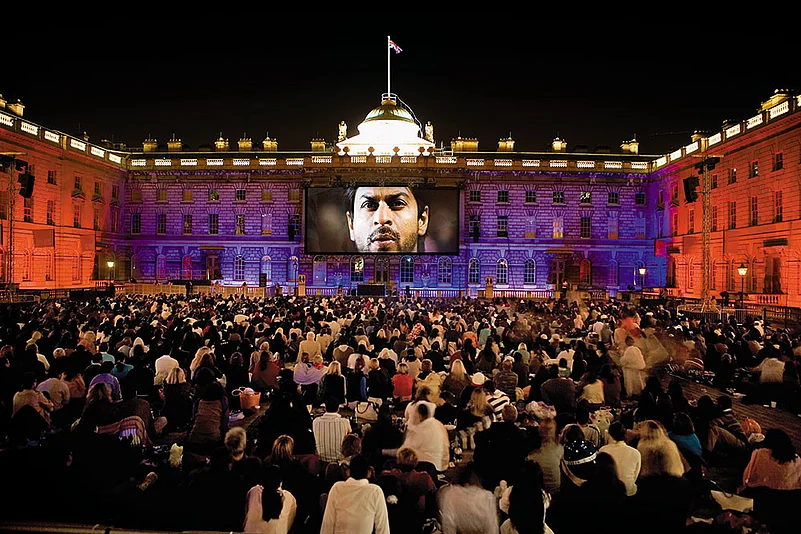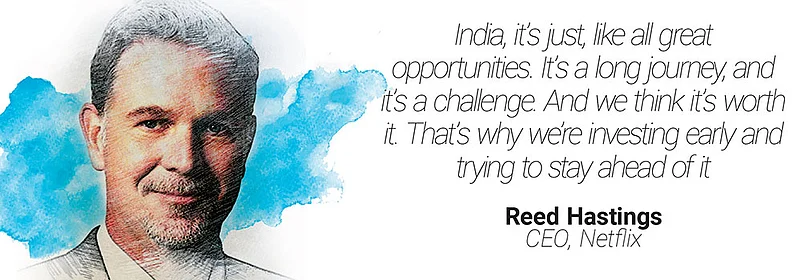
Before talking about the globalisation of India’s film industry, its potential and likely challenges, let us have a pop quiz:
Q: What is USA’s largest export?
A: Arms and defence equipment.
Q: What is USA’s second largest export?
A: ???
Well, the answer is content. It includes all kinds of content and formats, including sitcoms, reality shows, game shows and talk shows. These emerge from the American film industry, television channels, gaming divisions, animation studios, comic creators and over-the-top content creators like Netflix, Amazon and Hulu. To this mix, you can throw in the merchandise emanating from all this content, which sells like hotcakes worldwide. Let us continue with our pop quiz.
Q: What percentage of the American film industry’s total revenue comes from outside the US?
A: Approximately 70%.
Q: What percentage of the Indian film industry’s total revenue comes from outside India?
A: Approximately 10%.
While we are in no way encouraging India to become more like the US in any way, shape or form, numbers do not lie. They often provide a window to understand how and why some countries are successful at something. Studying them and learning from them, while retaining one’s core aesthetic ideology, is worthwhile.
India has nearly 18% of the world’s population and almost 4% of the world’s economy. And yet, it has only 1% of the world’s media and entertainment market.
We must acknowledge that language plays a part in these skewed figures, albeit a small one. But, the global success of Japanese, Korean and Spanish content shows that language is not a large barrier. Content can supersede language because it is its own audio-visual experiential-narrative language. It can be enjoyed by anyone alien to that dialect.
This raises a pertinent question: why is India, despite its documented history of over 10,000 years of content, not currently as global as the US which has less than 300 years of history?
The answer to the first question is quite simple. We have not managed to leapfrog into the global stage because most of our content does not appeal to the rest of the world.
Incidentally, while India has a 110-year-old film industry, an approximately 50-year-old TV industry and around 25-year-old animation industry, it is still not a global force to be reckoned with in these fields. Nor is it a leader in educating those interested in joining it. This paradox forms the crux of the lack of globalisation in the media and entertainment sector.
India is a global player in domains like science, technology, pharma and space exploration, which was possible because of the excellent educational framework created decades ago. However, we have entirely neglected education in the arts stream.
Our education has been broken for decades, focusing on memorisation and retention of information rather than analysis and creative expression. Truly, we have never really been able to de-colonise (dare I say de-Macaulay-ise) our education. And, therein lies the crux of the problem and the solution.
If we want to untangle the mystery of how to export our content and our vast cornucopia of stories to the world, we need to understand and fix our education system.
While Indian education has recently been unshackled structurally by the New Education Policy 2020, it still needs a significant widening spectrum of subjects students study. This recalibration includes the weight given to specific subjects, not the teaching methodology itself.
We need to enhance the learning of storytelling and emphasise narrative, creativity, communication, performing arts and design in high school. Making this an inalienable part of learning, coupled with a plurality of premium education at the higher level, will ensure that the most creative of our students see a clear and well-supported pathway to building a career in the entertainment sector.

This is also where we can dig into our treasure trove of stories. A solid and detailed study of our epics and their form, structure and relevance will ensure that students understand and imbibe the culture of their land and what makes India and its stories unique.
These well-trained, well-educated and well-qualified professionals, armed with not just a brilliantly imaginative mind but a highly competent techno-creative skillset and a deep understanding of their culture, will become harbingers of globalisation for India’s highly under-rated film and entertainment industry. They will be able to make impactful and globally appealing content.
So, our filmmakers, rather than becoming “Westernised”, can flip the narrative. The highly successful Korean, Spanish and Chinese content is testimony to the rootedness of their creators, giving it a soul which is appreciated worldwide.
While we talk about taking our content global, a question may pop up in your mind: why? Why do we care if Indian content goes global or not? What is the big deal if the Indian M&E industry goes global or not? If we already have a piece of the global pie in sectors like tech, pharma, etc., what is the big deal about content?
The answer again is—“a lot”.
Content is the sharp end of the stick that helps companies break into a new market. It is not a business in itself, but something that markets the country and its brands and lifestyle to the world.
Think back to the time when Mcdonald’s or Dunkin Donuts outlets opened in India. Why were there long queues of people trying to get in to eat what can best be described as low-nutrition fast food?
It is because they were sold as “cool” and “unmissable” things to the audience for decades, often through subtle or overt references. This entrenched them as part of “the great American lifestyle”, fuelling aspirational buying.
It is a self-propagating cycle. Today, when an average Mumbai teenager becomes more aware of Korean and American culture, their lifestyle and even lingo become inclined to those countries over the local culture. They will automatically prefer the next piece of American content that is produced rather than something arising from, let us say, Rajasthan, which may be geographically closer to them but is culturally far away.
Look at Indian television. The one original Indian game show format that had a home on Indian television, Antakshari, has been elbowed out by multiple imported game show formats. Think Indian Idol, Big Boss, India’s Got Talent, Dancing with the Stars and Dance India Dance.
While it is usually referred to as soft power, it is the grip one country has on the audience of another. It can earn market share without having to put any skin in the game there in the form of investment and yet elbow out local competition.
It is not that we do not have any precedent for this approach in India. Look at what we have done with ayurveda and yoga. Similarly, if we can tell the stories of our lands in a rooted narrative and storytelling style that appeals to the world, we can reach out globally. We have done it in the past multiple times, like recently with RRR and Chhota Bheem and in the past with Lunchbox, Lagaan and others.
Digging deep to set up a strong educational framework, a robust education to our youth of Indian stories, epics and heroes of our lands and equipping them with the skillset needed to tell our stories to the world will possibly enable the largest globalisation of India and Indian-ness in the world.
Subhash Ghai is a filmmaker and founder of Whistling Woods International; Chaitanya Chinchlikar is vice president and business head of Whistling Woods International


























